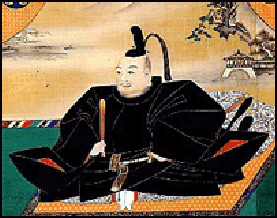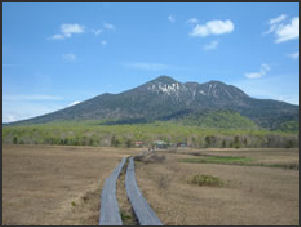NIKKO

Nikko (120 kilometers north of Tokyo, two hours by train) is perhaps the most interesting day-trip and weekend destination from Tokyo. Founded in the 8th century by the Buddhist priest Shodo, it is home of Nikko National Park and 103 historic buildings, including nine national treasures and 94 important cultural properties and architectural wonders such as Toshogu Shrine, Futarasan Shrine and Rinnoji Temple, each of which is set in a beautiful location and has been designated as a UNESCO World Heritage Site. Recreational opportunities at Nikko National Park include hiking, camping, mountain climbing, boating, fishing, skiing and skating.
The Nikko shrine complex inspired the saying, ‘Never say splendid until you’ve seen Nikko’. Set in a lush cryptomeria forest, the magnificent Nikko Toshogu Shrine complex dedicated to Tokugawa Ieyasu, the founder of the Tokugawa Shogunate, demonstrates the superb skill of the Edo period artisans. Carved, lacquered, painted and gilded, the buildings are inclined to dazzle one with the wealth of finely worked detail. Be sure to look for the famous ‘See no evil, say no evil, hear no evil’ monkeys.
Nikko town is home to about 20,000 people. Because of its closeness to Tokyo it often draws huge crowds on the weekends. In the 8th century Nikko was a sacred site where a famous training center was set up. In 1617, Tokugawa Ieyasu was buried in Nikko. In 1634, his grandson, Tokugawa Iemitus, built the shrine that laid the foundation for the town we see today. The Nikko area is famous for its autumn colors.
Tourist Office: There is an excellent tourist office at Kyodo Center (☎ 0288-53-3795). The one at Tobu-Nikko Station is not as good. Visitors are advised to buy the "two shrines, one temple" ticket for ¥900, which cost less than half of the separate admission costs for Nikko's two famous shrines (Toshogu Shrine and Taiyun-byo Shrine) and one temple (Rinnoji Temple).
Websites: Official Nikko City Tourism Association Site visitnikko.jp; Wikitravel Wikitravel ; Nikko City site city.nikko.lg.jp ; Nikko National Park Site National Parks of Japan ; Map: tobu-bus.com/en/nikko/pdf/nikko_routemap UNESCO World Heritage site: UNESCO website Hotel Websites: JapanHotel.net JapanHotel.net Ryokan and Minshuku Japanese Guest Houses Japanese Guest Houses Budget Accommodation: Japan Youth Hostels (click hostels for good map and description of hostels) Japan Youth Hostels Check Lonely Planet books Getting There: Nikko is about two hours by train from central Tokyo. Lonely Planet Lonely Planet
Sights in Nikko

Sights in Nikko include Shinkyo Bridge, established where the founding monk of Nikko was brought on the back of two serpents; Futara-san-jinja Shrine, dedicated to local mountain kami; Nikko Natural Science Museum, where visitors can see wonderful scenery on a large-screen multi-media show. Nearby, Kegon Falls descend in a clear line from the blue waters of Lake Chuzenji.
A cedar-lined avenue that stretches for 37 kilometers in Nikko is regarded as the longest tree-lined street in the world. It was created over 20 years beginning in 1625 as an approach to Nikko’s Toshogu Shrine by Matsudaira Masatsuna, an aide ro Tokugawa Ieyasu. There are 12,500 cedar trees on the road, down from 16,500 in 1971. Here is some discussion of making parts of the road a promenade and closing the whole thing down to vehicular traffic.
Imiachi (central Nikko) was a stop on the Nikko Road. A three kilometer section of the road west of Kami-Imachi Station on the Tobu Railway is lined with huge cedar trees, some of them more than 400 years old. Nikko Kanaya Hotel over the years has welcomed Charlie Chaplin, Eleanor Roosevelt, Charles Lindbergh, Helen Keller, Haile Selassie, Indira Gandhi, Jack Nicklaus and members of the British and Danish royal family.
Edo Wonderland (at Kinugawa Onsen) is where the life style of old Edo, present-day Tokyo, has been re-created. This 124-acre reproduction of Edo era village features kimono-clad women, sword-bearing samurai, shops, ninjas and 22 attractions including a ninja fun house, ninja maze and a "temple of hell." Tobu World Square is another theme park. It contains miniature versions of famous sights from around the world.
Nikko Botanical Gardens and Museum (10 walk from the Toshogu Shrine) covers a total area of 13,100 square meters and contains over 3,000 varieties of alpine flora. The Nikko Museum, housed in a three-story-high copper-roofed former Imperial Villa, displays natural and cultural objects found in Nikko National Park.
Shrines and Temples of Nikko: UNESCO World Heritage Site
The Shrines and Temples of Nikko were declared a UNESCO World Heritage Site in 1999. According to UNESCO: “ The Shrines and Temples of Nikko form a single complex composed of one hundred three religious buildings within two Shinto shrines (The Tôshôgû and The Futarasan-jinja) and one Buddhist temple (The Rinnô-ji) located in an outstanding natural setting. The inscribed property is located in Tochigi Prefecture, in the northern part of Japan’s Kanto region. The religious buildings, many of which were constructed in the 17th century, are arranged on the mountain slopes so as to create different visual effects. The first buildings were constructed on the slopes of the sacred Nikko mountains by a Buddhist monk in the 8th century. Today, they testify to a centuries-old tradition of conservation and restoration as well as the preservation of religious practices linked to a site considered to be sacred. They are also closely associated with prominent chapters of Japanese history, especially those relating to the symbolic figure of the great Shogun, Tokugawa Ieyasu (1543-1616) . [Source: UNESCO]

“The unusual character of the property is the result of a combination of very important long-standing values: the 50.8-hectare property provides evidence of a long tradition of worship, a very high level of artistic achievement, and a striking alliance between architecture and the surrounding natural setting, and it serves as a repository of national memories.”
”The site is important because: 1) The Nikko shrines and temples are a reflection of architectural and artistic genius; this aspect is reinforced by the harmonious integration of the buildings in a forest and a natural site laid out by people. 2) The Nikko shrines and temples is a perfect illustration of the architectural style of the Edo period as applied to Shinto shrines and Buddhist temples. The Gongen-zukuristyle of the two mausoleums, the Tôshôgû and the Taiyû-in Reibyô, reached the peak of its expression in the Nikko shrines and temples, and was later to exert a decisive influence. The ingenuity and creativity of its architects and decorators are revealed in an outstanding and distinguished manner. 3) The Nikko shrines and temples, together with their environment, are an outstanding example of a traditional Japanese religious centre, associated with the Shinto perception of the relationship of man with nature, in which mountains and forests have a sacred meaning and are objects of veneration, in a religious practice that is still very much alive today.”
Temples and Shrines in Nikko
According to UNESCO: “The shrines and temples of Nikko, together with their natural surroundings, have for centuries been a sacred site known for its architectural and decorative masterpieces. They are closely associated with the history of the Tokugawa Shoguns. The property area is composed of the three elements: 1) the twenty-three buildings of Futarasan-jinja shrine, 2) the forty-two buildings of Tôshôgû shrine, and 3) the thirty-eight buildings of Rinnô-ji temple.[Source: UNESCO]
Rinnoji Temple (near Toshogu Shrine) is ensconced in a forest of giant Japanese cedars. Founded in 1200, it belongs to the Tendai sect of Buddhism and was named a UNESCO World Heritage Site.
In main hall (the Sambutsudo) are gigantic gold-lacquered images of Kannon (the thousand-armed Goddess of Mercy) on the right, Amida (Buddha) in the center, and the Bato Kannon (horse-headed Kannon) on the left. On the northwest side of Sambutsudo is the Hall of Sorinto, a bronze-pillared structure housing ten thousand volumes of holy sutras. In the Treasury Hall is a collection of treasures associated with the temple. Website: Shrines and Temples at Nikko travel.tochigiji.or.jp
Taiyun-byo Shrine (near Toshogu Shrine) houses the remains of Iemitus Tokugawa. Shaded in cedar trees, it is smaller than Toshogu Shrine and in the opinion of many more aesthetically pleasing. Many of the buildings are scaled down versions of buildings found at Toshogu Shrine.
Website: Shrines and Temples at Nikko toshogu.jp/english/shrine
Toshogu Shrine

Toshogu Shrine(30 minute walks from Tobu-Nikko Station) is dedicated to Tokugawa Ieyasu (1524-1616), founder of the Tokugawa Shogunate. Constructed by the Shogun's grandson in 1636 and named a UNESCO World Heritage Site in 1999, the shrine has more of Chinese feel than a austere Japanese one because it filled adornments, including 5,173 carvings of flowers, dancing girls, Chinese sages and mythical beasts.
Toshogo is famous for is carvings and architecture, which combines Shinto and Buddhist elements. Eight buildings in the shrine, including the Yomeimon Gate, have been designated as national treasures and 34 other buildings have been designated as important cultural properties .The huge stone gate that marks the entrance to the shrine is reached by Cedar Avenue, a 22-mile-long scenic road lined with 300-year-old cedar trees.
The 110-foot-high five-story pagoda to the left of Toshogu Shrine is lacquered in red and gold and has a door painted with bold black paint. Built in 1650 and reconstructed in 1818, it has no foundation but instead has a suspended pole that swings like a pendulum in the event earthquake to maintain the building's equilibrium and keep it from toppling over. The main pillar is 60 centimeters in diameter. It extends to the forth floor to make the pagoda quake resistant.
The Torii Gate of the Two Deva Kings marks the true entrance to the shrine. Nearby are the Three Sacred Storehouses with gilded and colored carvings of animals, including elephants made an artist who had never had seen real elephants. On the eaves of the Sacred Stable are the famous "Hear no Evil, Speak no Evil and See no Evil" monkeys.
After passing through The Karado-torii gate, Japan’s first bronze shrine gate, you pass a Buddhist belfry and drum tower and Honji-do Hall, which features a huge ceiling painting of a dragon. Next comes the two-story-high Yomeimon Gate, boasting 500 detailed wood carvings of dragons, mythical beasts, sages and flowers. It is sometimes called the Twilight Gate out of the belief any person who gazes on the gate will become so mesmerized and forget about time they run the risk of being overtaken by twilight. Carvings on the 12 pillars that support Yomeimon Gate have been inverted in the belief that this will ward off evil spirits.
Passing through Yomeimon Gate you enter the main shrine area. Here, shaded by tall cedars is the famous "Nikko Sleeping Cat" and the modest tomb of Ieyasu Tokugawa. A separate entrance fee is required to view the cat and tomb. On visiting the shrine in 1689, the famous Japanese poet Basho wrote: “O holy, hallowed shrine!/ How Green all the fresh young leaves/ In the bright sunshine!”
Conservation of the Nikko Shrines and Temples
According to UNESCO: “The shrine and temple buildings, together with their natural surroundings, have for centuries constituted a sacred site and the home of architectural and decorative masterpieces. The site continues to function today as a place of religious rituals and other activities which maintain its traditions, both physically and spiritually. The site has suffered from natural disasters (e.g. fire, falling trees, and earthquakes) over the centuries. Each time, the damaged building was restored faithfully, following rigorously the original plans and techniques, using the original materials whenever possible with attention and care to the preservation of colouring, materials and decorative works. Detailed documents about these operations have been kept.

Tokugawa Ieyasu“Most of the buildings as elements of the property remain in their original locations. The setting, with its relationship between buildings and old growth forest planted in the early 17th century, has also been maintained. The mountains and forests retain their sacred meanings, and the shrines and temples of Nikko are in active religious use. The management of the inscribed property aims at preserving the rich harmony of the landscape which unites natural features and buildings. All the buildings which constitute the property are protected: nine under designation as National Treasures and ninety-four as Important Cultural Properties by the 1950 Law for the Protection of Cultural Properties.
”The inscribed property is owned by the Religious Organizations of Futarasan-jinja, Tôshôgû, and Rinnô-ji which are responsible for the management. Necessary repair works are conducted by the Foundation for Preserving Nikko Shrines and Temples which includes qualified conservation architects and skilled engineers. As fire is the greatest risk to the property, the monuments are equipped with automatic fire alarms, fire hydrants, and lightning arresters. In addition, the property owners organize fire brigades which work in cooperation with public fire offices. Moreover, because the individual religious sites are open to the public, property owners must consider the presentation and protection of their properties for their visitors.”
Nikko National Park
Nikko National Park (containing Nikko) is sometimes called Japan's "gem of scenic beauty." Located in the mountains between Kanto and Niigita, it covers 1,402 square miles and is known for its rivers, lakes, wooded highlands with maple and cedar trees and mountain paths. There lots of hiking possibilities in the area, Visitors often see deer and monkeys and sometimes catch glimpses of black bears. Website: Nikko National Park Site National Parks of Japan ;

Mt. Nantai Mt. Nantai is the second highest and most sacred mountain in Nikko National Park. Reaching a height of 2,486 meters high, it is the most stunning peak in the Nikko Range, a collection fo relatively young volcanoes between 2000 and 2,500 meters high. A picturesque path leads to the 400-meter-wide semi-circular crater on top of Mt. Nantai which last erupted 20,000 years ago and created much of the landscape around it. The spirit of the mountain is enshrined in Futarasan Shrine, located next to Toshugu mausoleum.
Lake Chuzenji (at the foot of Mt. Nantai) is a deeply indented 8-x-16-mile body of water formed when a lava flow from the Mt. Nantai blocked the Daiya river 20,000 years ago. The lake is 161 meters deep and has deep, indigo blue color. A number of cruises are offered. Rowboats are rented for ¥1,000 an hour. Boat tours are also offered on Kinugawa River, known for its autumn foliage and interesting rock formations.
Hatcheodejuma, a peninsula that juts out into Lake Chuzenji, has some of the most spectacular autumn colors in Japan. Iroha-zaka is is winding road that connects Nikko and Lake Chunzenji. A 500 meter elevation change on the road is achieved using a series of switchbacks and hairpin turns. There are 48 curves. The drive is awesome but congested during the autumn leave-viewing season.
Kegon Falls is one of the most spectacular falls in Japan. Plummeting over the edge of a plateau, it is 97-meter-high and is formed by water from Lake Chuzenji. Alongside the main falls are twelve minor falls, called the Junitaki. An elevator takes visitors to a lookout point for views of these falls at the bottom of a gorge, where they can feel the full force of the falls.
For good views of the lake and falls check out the observation platform at Akechidaira (which can be reached by cable car and a 20 minute bus ride from Umagaeshi).

oze moor Oze Plateau (part of Nikko National Park, 70 kilometers north of Tokyo) is the largest high moor area in Honshu. Covering 12 square kilometers, it is surrounded by high peaks up to 2,000 meters high and is home to Ozenuma lake, Ozehara moor and unique highland, wetland plant life and layers of peat up to five meters deep. The area is popular with hikers in the summer and is especially beautiful in the winter, when snow depths sometimes exceed four meters. One the area’s biggest problems is damage caused by the numerous deer that roam the plateau. Oze National Park (near Nikko Gunma and Fukushima Prefectures) is the home of Ozegahara wetlands. The wetlands are 1,400 meters high and are crossed by a boardwalk that allows visitors to explore around.
Websites: Oze National Park Government National Park Site National Parks of Japan Hiking Route Map:
Image Sources: 1) 2) 8) Visualizing Culture, MIT Education 3) 5) Nikko City 6) 7) Japan National Parks 9) Honda 10) 11) Kusatsu onsen site
Text Sources: JNTO (Japan National Tourist Organization), Japan.org, Japan News, Japan Times, Yomiuri Shimbun, UNESCO, Lonely Planet guides, New York Times, Washington Post, Los Angeles Times, National Geographic, The New Yorker, Bloomberg, Reuters, Associated Press, AFP, Compton's Encyclopedia and various books and other publications.
Updated in July 2020
